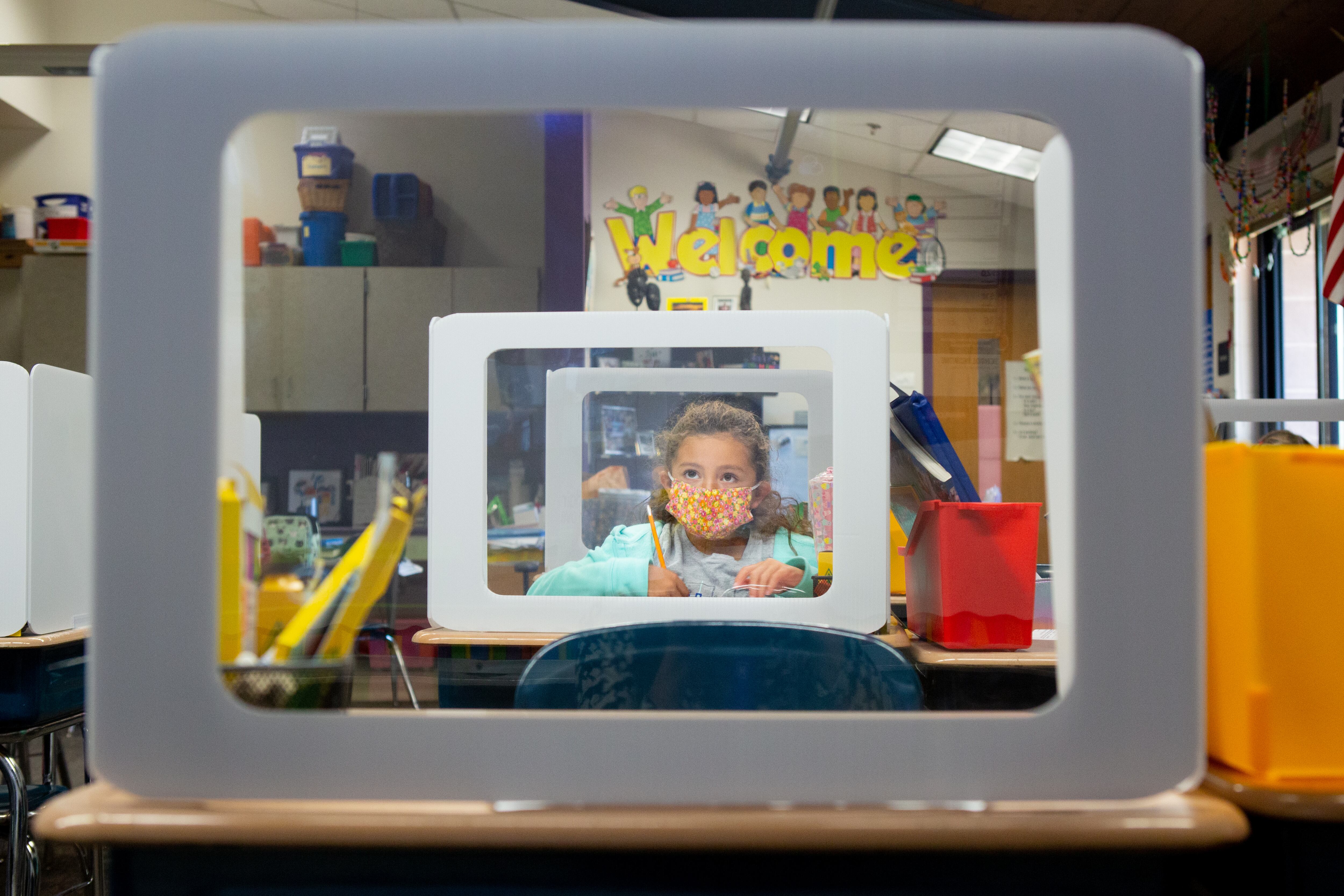Updated 6:35 p.m.
The Philadelphia Department of Public Health is relaxing its guidelines around student quarantines and building closures, increasing the number of cases of COVID-19 needed to trigger a pause to in-person learning.
At the same time, officials are asking the district to vastly expand the amount of COVID testing in school buildings by screening all unvaccinated students once a week. Now, the district tests only symptomatic students.
The new guidelines say that a class or cohort of 35 or fewer students should be quarantined if there are three or more cases, or four cases in a cohort of 100.
Under the new guidance, whole schools are only closed if 3% of the school population tested positive for the virus. That’s less strict than the previous guidance, which closed buildings when there were six cases regardless of the size of the student population.
Close contacts, which are defined as “someone who has been within six feet of someone with COVID-19 for 15+ minutes over 24 hours,” should be quarantined regardless of the number of cases in a class or cohort.
The new guidance contains the caveat that schools should test all unvaccinated students once a week “where possible.”
“Regarding testing, the recommendation does say ‘when possible’ and we will continue to work with PDPH and [Children’s Hospital of Philadelphia] to see how we can implement the safety measures to mitigate the spread of COVID-19,” district spokeswoman Monica Lewis said in an email.
In a statement, the district did not speak directly to the changes in conditions under which a school must quarantine classes or temporarily close.
The less conservative guidance comes about four weeks into a school year that has seen COVID cases among students leading to the temporary closures of several school buildings.
Health department officials say that in most cases, administrators should reach out to the health department for further guidance.
The guidance was relaxed because “we’ve seen other safety measures have been successful in containing the spread” of the virus, said Acting Health Commissioner Dr. Cheryl Bettigole. “We believe it’s possible to prevent wider spread of COVID in schools and keep kids in school,” as long as other safety measures are strictly followed, including universal masking, contact tracing, and vaccination.
It is also now recommending weekly “screening testing” of all unvaccinated students in areas where COVID-19 transmission is moderate, substantial, or high, a category that includes Philadelphia. Now, the school district is only testing symptomatic students.
The new guidelines on testing are meant to push the district to test more students than they are now — which has been a demand of the Philadelphia Federation of Teachers.
“This is a difference,” said Bettigole.
PFT president Jerry Jordan issued a statement saying that he was “extremely encouraged that the PDPH is heeding our calls for asymptomatic student testing. From the start, we have been very clear that this is an absolutely essential mitigation measure.”
He urged the district to use $47 million in federal COVID relief funds to hire a vendor to do the testing. Now, school nurses are tasked with student testing, and in a recent PFT survey they said that they are overburdened. There is also a shortage of school nurses, with 17 vacancies still listed on the district’s jobs board and other nurses out due to sick leave.
Jordan said that he did not want to comment on the new closure guidelines “until I better understand the District’s intent on implementing asymptomatic testing.”
The PFT survey also showed that nurses and teachers reported that some of the district’s other COVID safety protocols are not being strictly enforced.
“In the absence of tightening up of mitigation measures like mask enforcement, and in the absence of an implementation plan for asymptomatic testing, it would be irresponsible to loosen the closure guidelines,” Jordan said.
All students under age 12 are unvaccinated, and Bettigole said that the district can determine which students between 12 and 18 — and therefore eligible to be vaccinated — have received the vaccine. In Philadelphia, 46,660 individuals in the 12-17 age group have received the vaccine.
In a COVID-19 update during his Facebook Live appearance Wednesday afternoon, Superintendent William Hite said that the district is asking parents of children 12 or older who have received the vaccine to send proof to the district. He said t is not a requirement, but will allow the district “to better understand vaccination rates in our schools and better determine which students must quarantine.”
The guidance also offers schools the option of using “test to stay,” meaning close contacts can avoid the need to quarantine if the school is able to offer rapid testing, and the individual in close contact tests negative every other day for a week.
The district’s statement did not speak directly to whether it has the capacity to do more student testing, or whether it plans to hire an outside contractor, as the PFT is calling for. And Lewis said it was “not my understanding” that the district knows who is vaccinated and who is not among students who are eligible.
“Since the very start of the pandemic, the School District of Philadelphia has worked closely with public health experts from PDPH and Children’s Hospital of Philadelphia to implement extensive health and safety measures in every school to mitigate the spread of COVID-19,” the district statement said.“Additionally, as science has shown, COVID-19 vaccinations work to mitigate the spread of the virus. That’s why we continue to encourage anyone who is eligible to be vaccinated to do so.”







